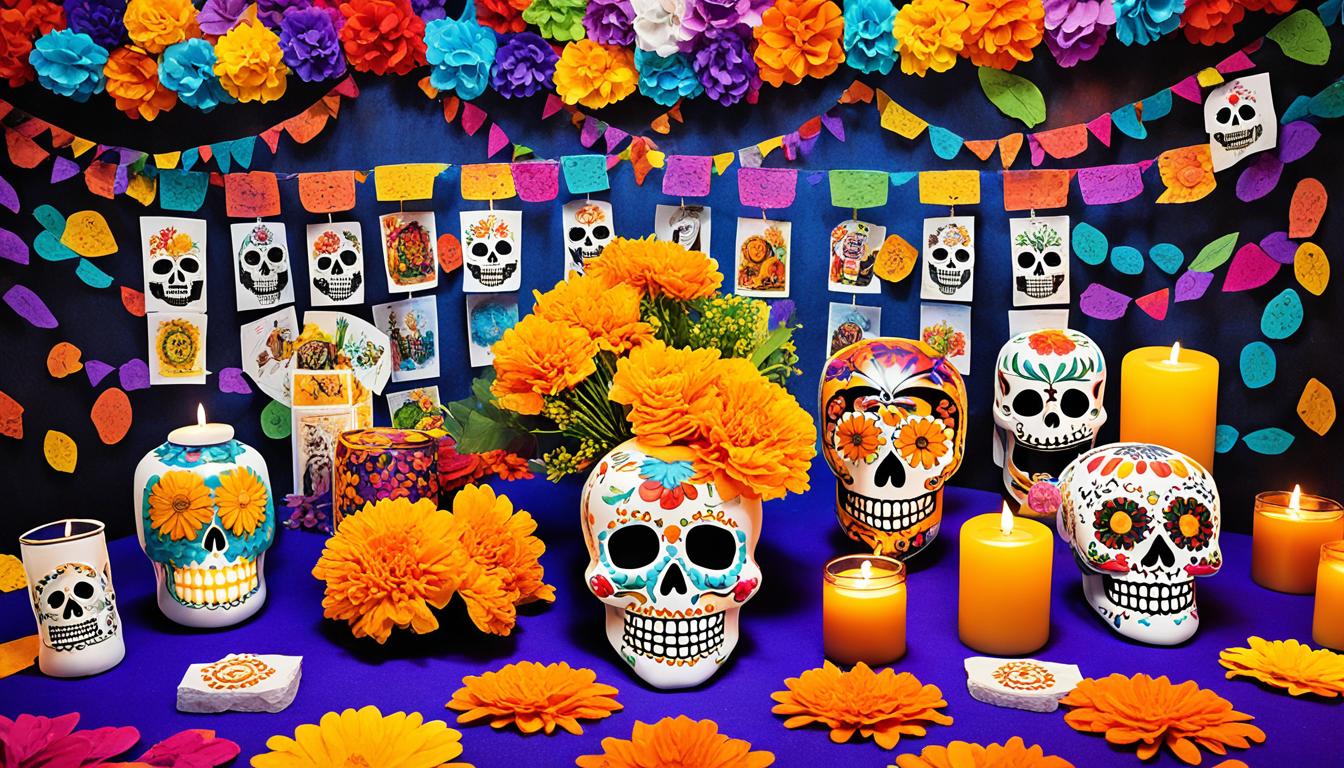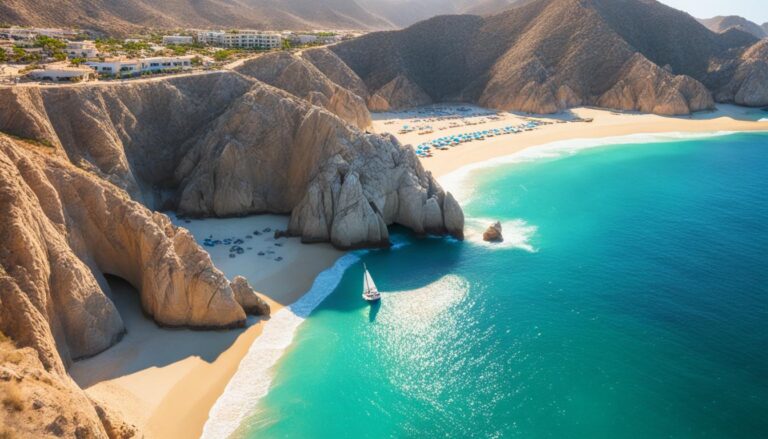Spirits and Celebrations: Experiencing the Day of the Dead in Mexico
Have you wondered about the lively celebrations of Mexico’s Day of the Dead? It’s more than Mexican Halloween. There’s a deeper, more meaningful side to this cultural tradition.
The Day of the Dead is not just about dressing up or going door-to-door for candy. It’s a time for families to remember those who have passed. They do this by celebrating the lives of their loved ones in a special and colorful way.
This festival has its roots in the past, with the Aztec people. It’s not a dark or scary celebration. Instead, it’s about showing love and respect for those who have gone. It’s celebrated from October 31st to November 2nd in many parts of Mexico.
UNESCO has even called the Day of the Dead a part of everyone’s cultural heritage. The way people celebrate can vary in different Mexican places. But they all share common traditions, like making altars for the dead, using candles, special bread, photos, and their favorite meals.
Another well-known tradition is making sugar skulls and catrina figures. These bright, detailed creations show the happy spirit of the festival.
Marigolds, colorful flags called papel picado, and foods like tamales and mole add to the celebration. They make the festival’s sights and smells rich and vibrant.
Key Takeaways:
- The Day of the Dead in Mexico is not a Mexican version of Halloween but a commemorative celebration deeply rooted in ancient Aztec traditions.
- UNESCO has recognized the Day of the Dead as an Intangible Cultural Heritage of Humanity.
- Traditions of the Day of the Dead include building altars (ofrendas), decorating them with offerings, creating elaborate sugar skulls and catrina figures, and using marigolds, papel picado, and traditional foods to enhance the celebration.
- The festival extends from November 2nd to October 31st and November 1st in some parts of Mexico.
- The Day of the Dead is a vibrant and joyful celebration of the lives of deceased loved ones.
Day of the Dead History
The Day of the Dead is a famous Mexican festival. It’s known as “Día de los Muertos” in Spanish. It started as an Aztec event to honor gods of the underworld.
During this festival, people paid respects to their dead loved ones. They believed it helped the spirits safely reach the afterlife. Today, we still see these customs in the modern Day of the Dead celebrations.
The Spanish arrived in Mexico in the 16th century. They tried to change the locals’ religious practices to Catholicism. They matched the Day of the Dead with Catholic holidays like All Saints and All Souls Days.
“The Day of the Dead was adapted to fit into Catholic traditions. But it still kept many old customs alive.”
The Spanish didn’t fully wipe out the Aztec ways. A mix of Catholicism and old practices started. This blend has made the Day of the Dead a unique event. It represents Mexican culture deeply.
Learning about the history of the Day of the Dead shows how different cultures came together. This special union makes the celebration what it is today.
Day of the Dead Traditions

Building altars, known as ofrendas, is a key tradition on the Day of the Dead. These altars welcome spirits of the deceased. They do this with candles, sweet bread, photos, and their loved one’s favorite food.
The iconic sugar skulls are decorated with vibrant designs and names of the dead. They show how we honor and remember our lost loved ones.
Catrinas, elegant skeletal figures, are a famous symbol of this festival. They were brought to life by Mexican artist José Guadalupe Posada. These female skeleton figures wear beautiful clothing, often with stylish hats and dresses.
Calacas and calaveras are bright skeleton statues and skulls dressed as we are. They show death as something joyful. This represents the belief that life after death is a happy one.
Marigolds, known as cempasúchiles, are important flowers for the Day of the Dead. They are thought to lead spirits back to the living world. Their bright colors of orange and yellow add to the festive feel, seen in altars and graves.
Papel picado, decorative paper flags, is a big part of the celebration too. These cut paper banners have traditional designs and bright colors. They decorate streets, homes, and cemeteries, spreading a festive mood.
The Day of the Dead celebrates the beauty and meaning of life and death. Through altars, sugar skulls, catrinas, and with marigolds and papel picado, Mexicans remember and honor their loved ones. This special time welcomes the spirits to be remembered.
Where to Celebrate Day of the Dead
The Day of the Dead is a big celebration in Mexico. Some places are famous for their colorful events. For example, in San Miguel de Allende, families visit the graves of their loved ones. They clean the tombstones and decorate them with flowers and candles. There’s also the Calaca Festival, highlighting art and culture.
In Michoacán, especially in Patzcuaro, the Purepecha people perform special ceremonies. They visit the cemetery in a procession and create beautiful ofrendas.
Oaxaca changes a lot during the Day of the Dead. The city gets ready to welcome back the spirits of the departed. There are big altars all over, and people can see sand tapestry contests.
Mexico City celebrates big time with a parade, taking notes from the James Bond movie Spectre. It has huge skeleton figures and floats. Aguascalientes, the hometown of Jose Guadalupe Posada, hosts a 10-day festival for this occasion.







